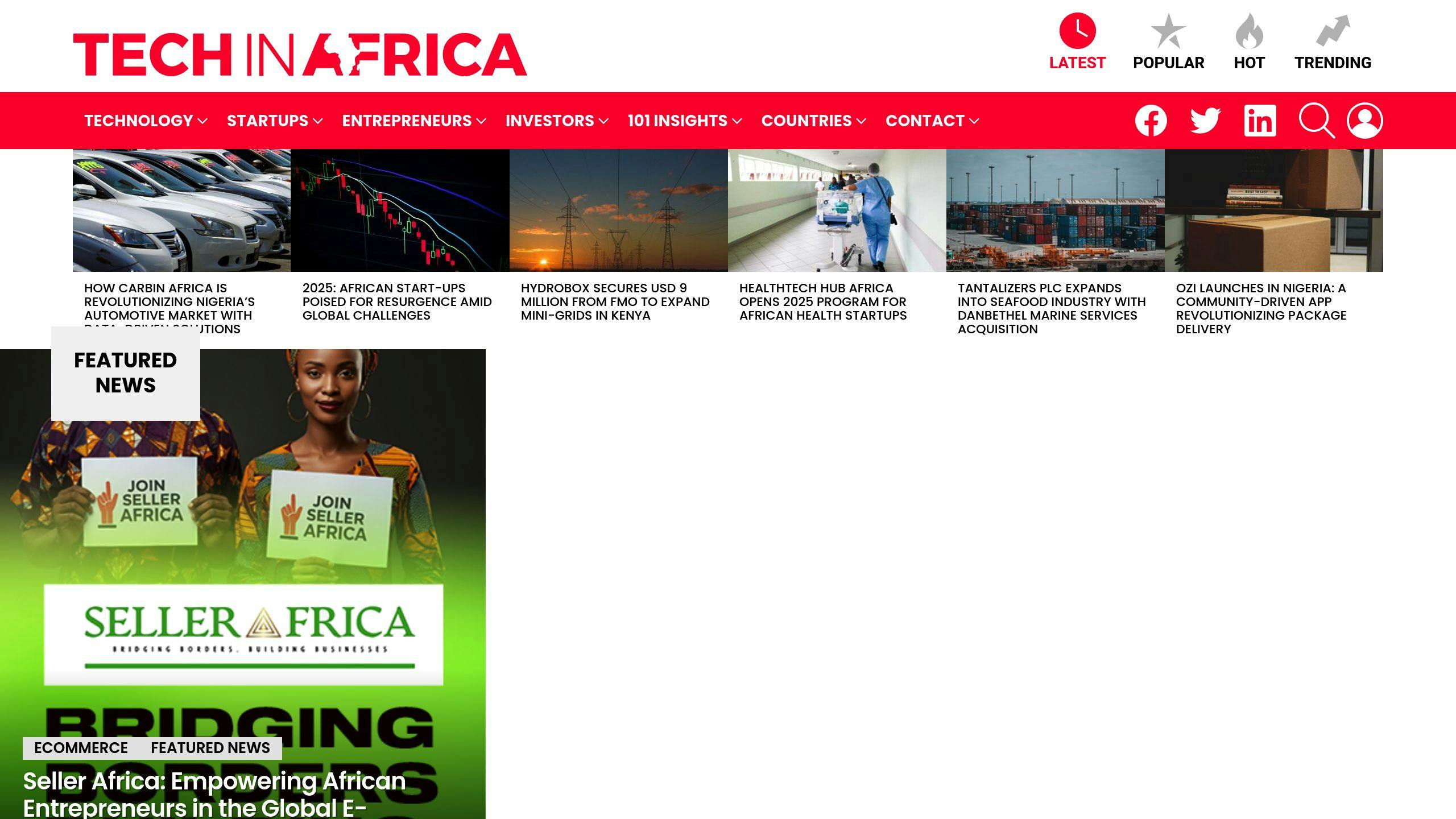Staying compliant with South African labor laws is essential for avoiding fines, maintaining employee trust, and running a smooth business. Here’s what you need to know:
- Key Laws to Follow: The Basic Conditions of Employment Act (BCEA), Labour Relations Act (LRA), and Employment Equity Act outline rules on leave, working hours, workplace equality, and dispute resolution.
- Employer Obligations: Register for PAYE, UIF, and SDL within 21 days of hiring your first employee. Draft clear employment contracts and enforce workplace policies.
- Avoid Penalties: Non-compliance can cost up to R2.7 million or 10% of your turnover for repeat offenses.
- Use Technology: Tools like PaySpace and Sage automate payroll, leave tracking, and compliance reporting.
- Regular Audits: Conduct internal reviews and external audits to catch and fix issues early.
Start with proper documentation, regular checks, and smart tools to ensure compliance and protect both your business and employees.
South Africa HR Employment Laws and Labour Relations Act
Overview of Key Labor Laws in South Africa
South Africa’s labor laws provide a structured framework to protect the rights of both employers and employees. Three major pieces of legislation form the foundation of workplace regulations in the country.
Among these, the Basic Conditions of Employment Act (BCEA) plays a central role in defining employment terms.
Basic Conditions of Employment Act (BCEA): Key Rules for Employers
The BCEA sets clear rules on leave entitlements and working hours, limiting standard workdays to 8 hours [1].
| Leave Type | Duration | Requirements |
|---|---|---|
| Annual Leave | 21 consecutive days | Based on an annual cycle |
| Sick Leave | 30 days | Over a 36-month period |
| Family Responsibility | 3 days | Annual entitlement |
| Maternity Leave | 4 months | Unpaid [1][3] |
In addition to leave provisions, the Act enforces age restrictions. Children under 15 cannot be employed, and hazardous work is prohibited for those under 18 [1][3].
Labour Relations Act (LRA): Managing Workplace Relationships
The LRA focuses on workplace dynamics and dispute resolution. It provides structured processes for handling conflicts through mediation and arbitration [4]. It also governs interactions with trade unions, covering collective bargaining and workplace forums.
Employers must follow rules around notice periods and severance pay to comply with the Act [1][3].
Employment Equity Act: Ensuring Fair Practices
This Act addresses workplace discrimination, requiring employers to promote equality and diversity. Non-compliance can lead to penalties ranging from R1.5 million to R2.7 million or up to 10% of a company’s turnover for repeat offenses [1].
Key employer responsibilities include:
- Fair recruitment practices: Ensuring hiring processes are free from bias.
- Equal opportunity: Supporting workplace diversity and inclusion.
- Regular reporting: Submitting employment equity reports to monitor progress.
By meeting these requirements, businesses not only comply with the law but also create a more inclusive and effective work environment.
Next, we’ll discuss practical steps for implementing these regulations in your workplace.
Steps to Meet Labor Law Requirements
Meeting South African labor laws involves precise attention to employer registration, proper documentation, and clear workplace policies.
How to Register as an Employer
Employers in South Africa must complete several registrations within 21 business days of hiring their first employee [2]. Here’s a breakdown of the key registrations:
| Registration Type | Purpose | Requirement |
|---|---|---|
| PAYE | Ensures income tax compliance | – |
| UIF | Covers unemployment insurance | 1% contribution from both employer and employee |
| SDL | Supports skills development | Mandatory for companies with an annual payroll over R500,000 |
After completing these registrations, employers should focus on drafting compliant employment contracts.
Creating Clear Employment Contracts
Employment contracts are a legal necessity under the Basic Conditions of Employment Act (BCEA) [1][3]. These contracts should detail important aspects such as job roles, pay structure, working hours, leave entitlements, termination conditions, and any additional benefits. A well-drafted contract not only protects both parties but also ensures legal compliance.
Once contracts are finalized, the next priority is establishing clear and enforceable workplace policies.
Setting Up Workplace Policies
Workplace policies play a key role in maintaining compliance and promoting transparency. These policies should cover:
- Safety protocols: Align with the Occupational Health and Safety Act to ensure a secure working environment.
- Disciplinary processes: Outline clear procedures for handling misconduct, including investigations and appeals.
- Leave management: Define the steps for applying for leave, notice periods, and tracking systems to avoid discrepancies.
Regular employee training sessions can help reinforce these policies, ensuring everyone understands their rights and responsibilities [1].
sbb-itb-dd089af
How to Conduct Compliance Audits
Audits play a key role in ensuring workplace policies, contracts, and practices align with South African labor laws. A structured audit process helps spot potential problems early, reducing the risk of serious compliance issues.
Getting Ready for an Audit
Having your documentation in order is crucial for labor law compliance audits. Here’s what businesses should have on hand:
| Document Category | Required Items | Purpose |
|---|---|---|
| Employee and Payroll Records | Contracts, Job Descriptions, Salary Records, Tax Contributions | Confirm compliance with employment and payment laws |
| Leave Management | Leave Applications, Attendance Records, Sick Notes | Ensure proper leave handling |
| Safety Documentation | Health & Safety Policies, Incident Reports | Show workplace safety measures are in place |
Keep these documents well-organized, preferably in chronological order, and easily accessible. South African labor laws mandate that employers keep these records for at least three years [1].
Choosing Between External Auditors and Internal Reviews
There are two main options for conducting audits: external auditors or internal reviews.
- External Auditors: These professionals bring expertise and impartiality, with a deep understanding of labor laws. Costs typically range from R15,000 to R50,000 per audit, depending on your company’s size and the scope of the audit [1].
- Internal Reviews: A more budget-friendly option, internal reviews allow for ongoing compliance checks. However, they require a well-trained HR team, sufficient resources, and solid documentation practices.
Many companies find a combination of both works best – quarterly internal reviews paired with annual external audits provide a balanced approach to staying compliant [1].
Regular audits not only help ensure compliance but also give businesses the chance to address any issues before they turn into costly penalties.
How to Handle Non-Compliance Issues
Non-compliance with South African labor laws can lead to serious risks for businesses. It’s essential to understand the potential consequences and take action to address any issues promptly.
Penalties for Violating Labor Laws
The Employment Equity Act imposes steep fines for violations. First-time offenses can cost up to R1.5 million, while repeat violations may result in fines as high as R2.7 million or 10% of a company’s turnover [1]. These penalties highlight the need for businesses to ensure they meet legal requirements without delay.
Addressing Compliance Issues
Fixing compliance problems isn’t just about avoiding fines – it’s also about running a business that operates within the law. Some common areas that may need attention include updating employment contracts to meet BCEA standards, ensuring leave policies comply with sick leave regulations, and registering with SARS and UIF within 21 business days [1].
Steps to Resolve Compliance Issues:
- Conduct a thorough review with professional guidance to identify gaps or violations.
- Update contracts, policies, and payroll systems to align with legal requirements.
- Inform employees about any changes and provide necessary training.
- Keep detailed records of all corrective actions taken and monitor progress.
How to Prevent Future Issues:
- Schedule regular internal compliance reviews.
- Use HR software to track and manage compliance requirements.
- Provide ongoing labor law training for HR staff.
- Keep up-to-date with changes in labor regulations.
Using Technology to Simplify Compliance
Addressing non-compliance is crucial, but technology can play a key role in preventing these issues from happening in the first place. Today’s tools offer practical ways for South African businesses to stay aligned with labor laws while cutting down on paperwork and reducing human error.
HR and Payroll Tools for Compliance
HR and payroll platforms like PaySpace and SimplePay make compliance easier by automating tasks like PAYE submissions, UIF tracking, leave management, and real-time reporting. For example, Sage Business Cloud Payroll automatically updates with regulatory changes, helping to minimize mistakes and keep businesses compliant.
| Compliance Feature | Business Impact |
|---|---|
| Automated Payroll Processing | Helps avoid SARS penalties |
| Digital Leave Management | Ensures compliance with BCEA rules |
| Real-time Reporting | Makes audits less complicated |
When selecting compliance tools, consider these two factors:
- Data Security: Protect sensitive employee information with strong security measures.
- Automated Updates: Ensure tools regularly reflect the latest regulatory changes.
Tech In Africa: A Resource for Business Solutions

Tech In Africa is a valuable platform for discovering HR technologies and compliance tools tailored to African businesses. It provides insights into the latest solutions for managing compliance and workforce processes, specifically designed for local needs.
"The use of technology in HR and payroll can significantly reduce the risk of non-compliance by automating processes and providing real-time data" [1]
Conclusion: Staying Compliant with South African Labor Laws
Failing to comply with labor laws in South Africa can lead to serious financial penalties and disrupt business operations, while also impacting employee well-being.
To stay on track, focus on three key areas:
- Documentation and Registration: Start by registering for UIF, PAYE, and SDL. Keep employment contracts up-to-date and conduct regular reviews to identify and fix any issues before they grow into larger problems.
- Regular Assessments: Frequent audits help catch compliance issues early. This not only ensures fair labor practices but also safeguards your business.
- Using Technology: Automated HR and payroll systems can help meet UIF, PAYE, and BCEA requirements while minimizing errors caused by manual processes.
Tracking progress through audits and employee feedback is essential. By combining solid documentation, regular checks, and smart tools, businesses can build a strong system to comply with labor laws, protecting both their operations and their employees’ rights.
Related posts
- How African Startups Retain Top Tech Talent
- Top Co Working Spaces for Startups in South Africa
- DeFi Regulations in Africa: Key Challenges
- Ultimate Guide to Egypt Labor Laws for Startups





